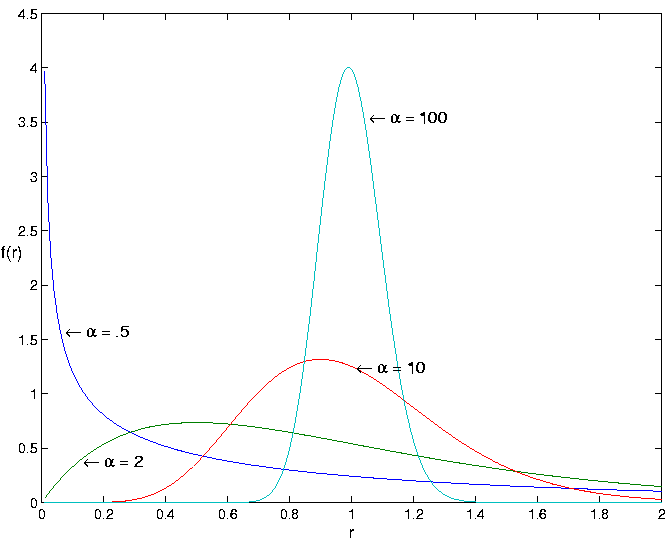Models that allows continuous variability of mutation rates over sites
are more realistic and the gamma model of Yang (1994)
outperforms the invariant model. The discrete gamma model is implemented
in PHASE
. The continuous rate distribution is approximated with a discrete
distribution which is computationaly tractable and sites are divided into ![]() equally
probable rate categories. A single parameter
equally
probable rate categories. A single parameter ![]() governs the shape of
this distribution and the substitution rates for all categories.
The mean
governs the shape of
this distribution and the substitution rates for all categories.
The mean ![]() of the gamma distribution is the average mutation rate of our
substitution model as stated earlier and its variance is
of the gamma distribution is the average mutation rate of our
substitution model as stated earlier and its variance is
![]() .
A small alpha suggests that rates differ significantly between
sites with few sites having high rates and others being
practically invariant; on the contrary, large
.
A small alpha suggests that rates differ significantly between
sites with few sites having high rates and others being
practically invariant; on the contrary, large ![]() models weak rate
heterogeneity (see figure 2.6). When
models weak rate
heterogeneity (see figure 2.6). When
![]() , the gamma model reduces to the single rate model.
Computational requirement of the discrete gamma model is roughly
linear, i.e., the application of a discrete gamma model
with
, the gamma model reduces to the single rate model.
Computational requirement of the discrete gamma model is roughly
linear, i.e., the application of a discrete gamma model
with ![]() categories is about
categories is about ![]() times slower than the use of a
model where rate heterogeneity is not considered.
times slower than the use of a
model where rate heterogeneity is not considered.

|